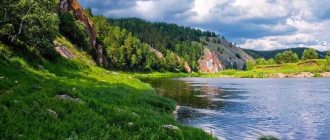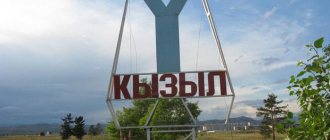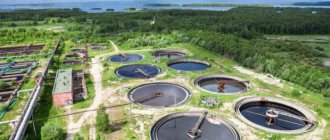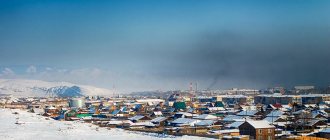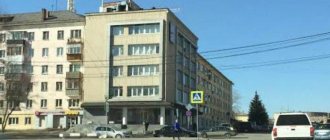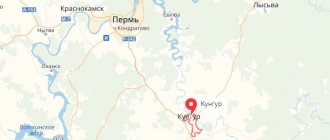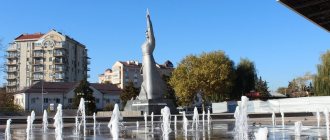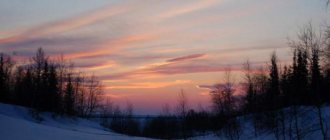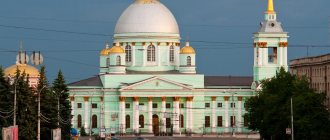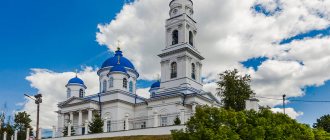The poorest and most criminal region in Russia. A remote corner where the number of inhabitants is several times less than the number of livestock. And also the insensitivity of the locals to alcohol with all that it entails, stories about inter-ethnic clashes during the era of perestroika and the mass exodus of the Russian population in our time.
In ratings of tourist attractiveness, the Republic of Tuva occupies one of the last places in the country. However, despite the existing problems and not the most attractive image, this is an incredibly interesting region, where the flavor of nomadic culture is seasoned with unusual culinary traditions, shamanic rituals are intertwined with Buddhism, and a kaleidoscope of landscapes changes from taiga to semi-deserts. Alexey Egorov tells more about why to come here, as well as about the stereotypes and nuances of traveling around Tuva .
Almost all of my fellow tourists dream of visiting Tuva, but deny themselves this pleasure due to the bad reputation of the region. A recent report by the Editorial Office from there and a repost of an excerpt from it by Dude only strengthened such a prejudice. But it’s better to see it once for yourself than to spy it a hundred times in the media. Following this principle, I went on a road trip around Tuva with a group of the New Nomads tourist club and realized that the seventeenth region of Russia is quite safe for tourists, and well-known stereotypes about Tuvans often do not stand up to criticism.
Capital of Tuva
The sovereign state of the Tuvan People's Republic arose from the fragments of a satellite of the Russian Empire, when the October Revolution destroyed not only the empire, but also its satellites, among which was the Uriankhai region, which served as a kind of buffer separating Russia from the Chinese Empire.
In the newly created state, people's power was established, which was represented by the Soviets, and the government of Tuva was located in a very young city, created only four years before the republic declared independence.
Founded in 1914, the settlement immediately received the status of a city, but initially bore the name Belotsarsk, as it was rebuilt by Russian settlers who came to establish imperial power in the new lands.
Thus, the Republic of Tuva acquired a city that would later receive the name Khem-Beldir, which was given to it by representatives of the anti-monarchist movement, which supported the Bolsheviks who had recently come to power. The city received its modern name only in 1924.
History of the region
The lands of the modern republic were inhabited in the first millennium BC. Archaeologists find traces of the presence of Indo-European nomads, then Turkic tribes penetrate here. In the IV-III centuries BC. e. here the first state formation arose, extending to the west of Lake Baikal. Chinese chronicles call it “Dingling-guo”. The medieval history of Tuva is full of bloody events. In the 8th century there was an independent principality ruled by a bek who claimed the title of khan. A hundred years later, the Kaganate of the Yenisei Kyrgyz had already emerged on the territory of Tuva. This steppe empire extended from Eastern Turkestan to the Amur and Irtysh. The Kaganate existed until the 13th century, and then became part of the Great Mongol Empire of Temujin (Genghis Khan). The territory of Tuva alternately became part of various khanates (Northern Yuan, Khotogoit, Dzungarian), until in 1758 it was captured by China (Qing dynasty).
Kyzyl city
Tuva began its journey as a sovereign state with the adoption of the Constitution in 1924. That same year, the USSR recognized its independence, and Mongolia did so two years later, in 1926. It was in the year of adoption of the Constitution that the city began to be called Kyzyl.
The location chosen for the founding of the new settlement was extremely favorable. The city is located at the confluence of two large Siberian rivers - the Big Yenisei, which is called Biy-Khem in the local language, and the Small Yenisei, which the locals call Ulug-Khem. This position of the capital of Tuva was beneficial due to its protection from attacks and spies, because initially the majority of the city’s residents were military personnel, engineers and their families. The first settlers of the city were well-educated people who held significant government positions.
Thus, as of 2022, the history of the city of Kyzyl is only one hundred and three years old. Another interesting fact is that the capital of the republic still does not have its own railway station, and the nearest one is three hundred and ninety kilometers away.
The population of Kyzyl reaches one hundred and fifteen thousand, and the authorities still hope that in the near future they will be able to extend the railway line to the city. However, oddly enough, the majority of residents of the republic are against the construction of the railway, because it can not only damage the fragile ecology, but also negatively affect the identity of the region.
Climate and geography
It is generally accepted that the geographical center of Asia is located in the capital of Tuva. However, even if this is not entirely true, you can be sure that in any case the center is located in the republic.
This central position of the republic makes its climate sharply continental, which means there are long, harsh winters, while summers can be quite hot. There are known cases when the temperature in the summer months reached +38 °C.
Despite this, the region where the Republic of Tuva is located is equated to the regions of the Far North, which leaves an imprint on all economic activities carried out in the region. In the mountainous regions of the republic there are areas where the ground never thaws.
At the same time, the growing season reaches 150-160 days a year, which makes it possible to grow many crops.
The Republic borders the Irkutsk region and the Krasnoyarsk Territory, as well as several national regions - Khakassia, Buryatia and the Altai Republic. In addition, Tuva is a border region of Russia, as it shares a border with Mongolia.
Abode of boundless dual faith
Tuva is a Buddhist region. We were reminded of this back in Abakan - the Tuvan driver who picked us up from the station had an amulet with the image of the Dalai Lama hanging in his car. When entering Kyzyl, a huge mantra laid out on Mount Dogee . It can be seen from anywhere in the city. We didn’t climb the mountain, but we visited the main Buddhist temple of Kyzyl Tsechenling , which translated from Tibetan means “the abode of boundless compassion.”
Before visiting the temple, according to the Buddhist tradition, we walked around it three times clockwise, touching all the corners. Judging by the way they wiped themselves, there is no shortage of parishioners here. Inside there are many Buddha statues of all sizes, offerings in the form of bowls of rice and bundles of candles, drums... The atmosphere is unusual, but calming. Believers literally stretch out in front of the altar in prayer, just like especially religious grandmothers in Orthodox churches.
After seeing Kyzyl, we left the city and set up tents in a yurt camp on the banks of the Yenisei. Where we witnessed a ritual performed by a Tuvan shaman for a young German couple. A woman in a robe with a huge number of ropes sewn onto it and a crown of feathers on her head walked around the fire and beat a tambourine, and the Germans watched. Afterwards, the camp administrator approached us and asked us to move away so as not to interfere with the sacred action.
Buddhism and shamanism in Tuva are closely intertwined. At almost every pass or peak here you can find an ovaa - a pole strengthened with ropes, on which Buddhist believers hang multi-colored silk scarves (in Tuvan - chalamaa ). Our guides did not have scarves with them, but they still left gifts in the form of small change, and later it turned out that Lyosha sometimes practices shamanic practices - for example, to establish good weather.
Mountains and basins
The region where Tuva is located is characterized by a pronounced mountainous terrain. Most of the territory of the republic is occupied by mountains, in percentage terms this is approximately 82%. The rest is occupied by intermountain depressions, the largest of which is called the Tuva Basin, the length of which reaches four hundred kilometers, and the width ranges from twenty-five to sixty.
In addition to Kyzyl, in the basin there are cities such as Shagonar, Chadan, Ak-Dovurak. All these cities are located in the steppe zone, despite the fact that the basin itself is located in the so-called rain shadow of the Altai Mountains, which contributes to heavy rainfall in the summer, while winter is cold and dry, and practically windless.
The republic is surrounded on all sides by spurs of geographically and culturally important mountain ranges. From the east and north, Tuva is framed by spurs of the Sayan foothills, the peaks of which reach a height of 2000-3000 thousand meters above sea level.
A famous natural attraction of the republic is the Derby-Taiga basalt plateau, on which there are sixteen extinct volcanoes. The Great Yenisei originates on the same plateau.
They drink but don't kill
to the Tuvan capital Kyzyl from Moscow by plane, but this is not a cheap option. Thrifty tourists get to the region differently: by train to Abakan and there they order a transfer along the Yenisei federal highway. The section of the route from Abakan to Kyzyl is extremely picturesque. Here you will find the Siberian taiga, and the mirror of Lake Oya Ergaki and Aradan mountain ranges , and the Nolevka pass overlooking the endless steppe sea with islands of hills rising here and there... Beyond the pass is Tuva.
It is from the Yenisei highway that for many people their acquaintance with Tuva begins. People go to the Ergaki National Park, stop at Tuvan cafes along the way, ask drivers and guides about what kind of people they are – Tuvans, and in response they receive a fair amount of negativity. From what I personally heard: Tuvans are spontaneous - so much so that they relieve themselves right on the streets of Kyzyl, cruel - they even have a saying on this topic, they say, a wedding without a corpse is not a wedding, and they lose their heads from a glass of vodka.
Regarding spontaneity, these are all lies. I have not encountered any cruelty, but I think that is also greatly exaggerated. On the Yenisei embankment in Kyzyl there were many newlyweds and not a single fight. Our guide Lyosha Khoyugban worked as a toastmaster before coming to tourism. I couldn’t resist asking him about the veracity of the cruelty attributed to Tuvans at weddings. “Well, this is too much,” Lyosha was taken aback, “no, of course.”
But the information about the special sensitivity of Tuvans to alcohol is true. Drunk people in Kyzyl lie right next to the local drama theater, city administration and other central buildings. To the question of how to react to this, the answer is obvious: don’t drink it yourself, don’t offer it to Tuvans, and if you really feel like walking around Kyzyl in the dark, do it in a group and preferably with one of the trusted locals.
Tuva Altai
In the west of the republic there are the foothills of Altai, the peaks of which are already significantly higher than the Sayan ones and quite often exceed a height of 3000 meters. The highest peak is Mongun-Taiga, which rises 3976 meters at sea level. This height makes the mountain the highest point not only in Tuva, but throughout Eastern Siberia.
At the foot of this majestic peak lies the equally beautiful Hindiktig-Khol lake, which is famous for its high quality water. The crystal clear waters of the lake are mainly of glacial origin. Despite the fact that large rivers do not flow into the lake, it is the source of the Mogen-Buren River, the turbulent waters of which are poorly suited for rafting, and therefore are almost never used by tourists.
“Now it’s the liver’s turn.”
They say that every Tuvan, if not a nomad himself, then certainly has relatives wandering with herds of sarlyks (local yaks) or sheep somewhere in the mountains. While in the region, be sure to visit the nomads’ yurt, accompanied by a Tuvan guide, who will help in establishing a dialogue - in the remote kozhuuns (districts) of Tuva they do not speak Russian well.
In one of the nomad camps, for a nominal fee, we had a great time riding short Tuvan horses and, most importantly, took part in driving a sheep. Under the leadership of Lyosha, we separated a small group of animals from the sheep herd, and in it, in turn, we grabbed a specific ram by the legs (one tourist per leg). Here he is lying spread out on the ground, Lyosha with a determined look approaches him with a knife and... announces: “Not the one.”
Photo: Denis Generalov
Everything happened again. Finally, the desired ram was caught, and Lyosha demonstrated his slaughtering skills. Purely technically, it looked like this: a hand is inserted into an incision approximately in the area of the solar plexus between the skin and the rest of the carcass and, as I understand it, a vital nerve is torn off. According to Lyosha, the ram does not feel pain if it is cut this way. It’s hard to believe: at the moment of the murder, a large tear rolled out of the sheep’s eye, wide open in horror.
Before our eyes, the Tuvans cut up the carcass and boiled it in a huge cauldron. The meal began, during which Lyosha put more and more parts of the ram into the pot and, before passing the container around, explained: “These are kidneys.” Or: “Now it’s the liver’s turn.” Eating fresh, aromatic lamb on both cheeks alternated with drinking araga , a moonshine made from yak milk.
I’m not a connoisseur of alcoholic drinks and don’t know much about them, but I liked the araga. It has a very pleasant creamy taste and a degree that is almost unnoticeable. Because of this feature, you can drink aragu in glasses, and then get up and... immediately fall unconscious. They say that such a fate befell Boris Nikolayevich Yeltsin during his visit to Tuva in 1994. Also, according to Victoria, using a Tuvan araga recipe, one enterprising Englishman launched the production of luxury vodka under the Black Cow .
Ubsunur Basin
But the Ubsunur Basin State Nature Reserve, which is part of a large protected area located in Russia and Mongolia, is very popular among lovers of outdoor activities.
The reserve got its name from the basin and the salt lake of the same name. Lake Uvsu-Nur is located in Southern Siberia, along which the Russian-Mongolian border passes.
The lake is a vast endorheic body of water, into which not a single river flows. The confinement also contributes to the high salinity level of the lake.
However, not only the lake is an attraction of the reserve, which, along with the virgin forests of Komi, is on the UNESCO natural heritage list.
The reserve is of great importance for Eurasian nature due to its diversity, because on its territory there are a wide variety of natural zones - from glaciers to deserts. Significant areas are occupied by steppes, alpine high-mountain meadows, taiga and even glaciers. There are also sand dunes in this reserve.
In addition, the reserve is home to 359 species of birds and 80 species of mammals, including snow leopard, snowcock, deer, lynx and wolverine. The steppe part of the reserve is home to bird species such as the bustard, lark and demoiselle crane. Ground squirrels are also common here, as well as other small rodents - sandlings.
Water resources of Tuva
The Government of Tuva pays great attention to maintaining environmental balance in the republic. An important part of the local ecology are numerous bodies of water, many of which are drainless and salty.
However, the most important river not only in Tuva, but throughout Asia is the Yenisei, which is one of the largest rivers in the world. Most of the rivers flowing through Tuvan lands belong to the basin of this great river.
The Yenisei is formed as a result of the confluence of two large rivers - the Big and Small Yenisei, which are fed mainly when the snow begins to melt in the mountains in the spring. Since summers are often dry, spring meltwater is the main source for many small rivers in the region, as well as for agriculture.
Republic of Tuva: history
Sights remaining from previous eras are few. These are mainly mounds, finds from which have replenished the collection of the archaeological museum in Kyzyl. When the Mongolian National Revolution occurred in 1911, some Tuvan princes turned to Nicholas II with a request to accept their lands under Russian protectorate. In April 1914, this new formation became known as Uriankhai cream. At the same time, at the confluence of the Big and Small Yenisei, the construction of the village of Belotsarsk began. Under Soviet rule, it was renamed Krasnotsarsk, and later – Kyzyl. In 1921, the independent Republic of Tannu-Tuva was proclaimed. In 1932, under pressure from the USSR, some Mongolian lands were given to her. And in August 1944, the Small Khural of the Turin People's Republic decided to annex the state entity to the USSR and become part of the RSFSR as an autonomous region.
Agriculture
Despite the pronounced mountainous terrain, the republic has significant agricultural land, and its total area reaches 28% of the entire territory of Tuva.
The smallest areas are occupied by reindeer pastures, the area of which barely exceeds 3%, while the main areas are occupied by crop production, which specializes in growing potatoes and various grains.
Despite generally favorable conditions for farming, farmers face a number of significant difficulties, the main of which is soil degradation. The fact is that the lands of the republic are subject to the active influence of negative factors, such as wind and water soil erosion, that is, blowing out or washing away the most fertile layers.
Indigenous people of Tuva
The indigenous population of the republic are the Tuvans-Todzha, who make up the majority of the population of the city of Kyzyl and the entire republic. Despite the fact that the Russian-speaking population has been actively leaving Tuva in recent years, the number of residents in the republic is growing, and it has the highest birth rate in Russia. According to this indicator, the republic is followed by such regions as Ingushetia and Chechnya.
However, even with such a high birth rate and the absence of a threat of extinction of the ethnic group, the Tuvans are classified as the small peoples of the North. Residents of the republic received this status in 1991 and retain it to this day. This allows them to engage in folk crafts and run their households in such a way that the traditional economic structure is preserved.
Religion and culture
The culture of Tuva is largely a nomadic culture, which determines the way of farming. The main occupations of the indigenous local people are still hunting and nomadic pastoralism, namely reindeer herding and horse breeding, which are important suppliers of a variety of food products such as meat and milk.
The special status of a small people, as well as the noticeable transport isolation of Tuva from other regions of the country, allowed the Tuvans to preserve many of their rituals and traditions intact, among which Tuvan throat singing is the most well known.
Today, in the capital of Tuva there are national theaters, there are traditional cultural ensembles and schools where teaching is conducted in the national language. All this contributes to the preservation of national identity.
Events
Most tourists come to Kyzyl in transit - on the way to healing springs and mud lakes. But there are dates on the calendar when you should definitely visit the Republic of Tyva. First of all, it's New Year. It is celebrated here according to the lunar calendar (late January or early February). Games, horse races, and khuresh sports competitions take place everywhere. In these fights, men fight one on one. In August, when the shepherds come down from the mountains, the traditional Naadim holiday takes place. Tuva Republic Day is celebrated on the second Sunday of September. Literally all holidays are accompanied by horse racing, khuresh wrestling, and archery. During performances of local groups you can hear throat singing. This is another attraction in the culture of the Tuvan people.
